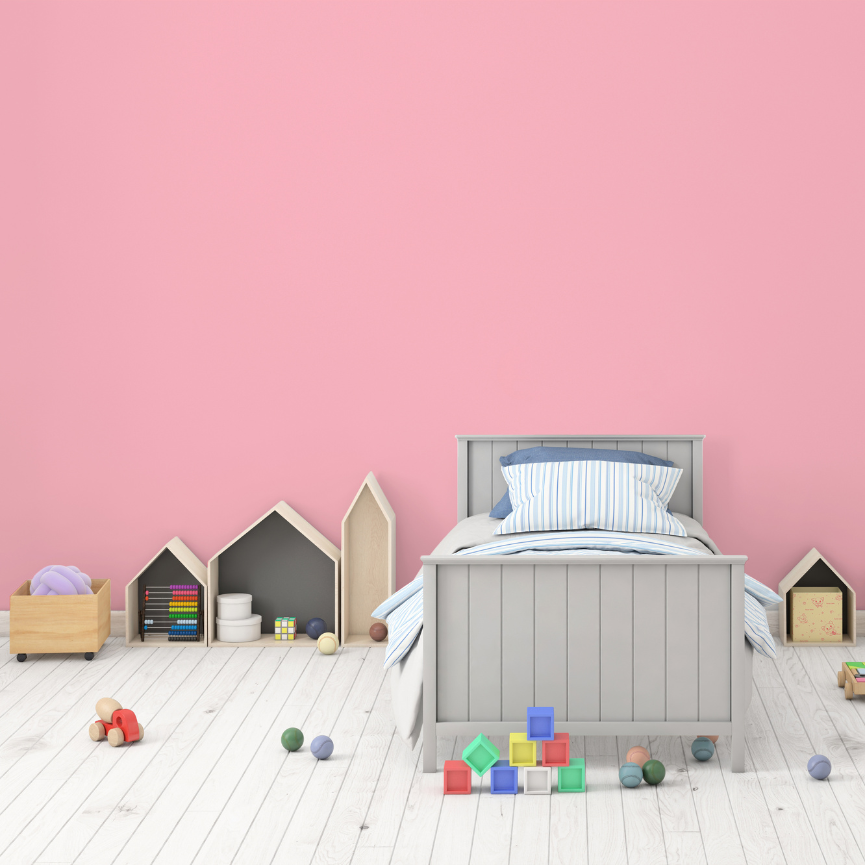
- May 09, 2024
- 125 Views
- 0 Comments
The Art Of Comfort: Sensory-Friendly Home Environment
Imagine coming home to a place that soothes your senses and uplifts your mood. Explore the journey of creating such a haven in our latest guide.
In today's fast-paced and technology-driven world, our homes serve as sanctuaries, providing comfort and solace from the external stimuli that bombard us daily. For individuals with sensory processing challenges, however, a home environment can become overwhelming and distressing. Whether one experiences hypersensitivity to noise, light, or touch, or faces challenges with proprioception and spatial awareness, creating a sensory-friendly home is essential to promote well-being, reduce stress, and foster a sense of calm and security. This article delves into the key principles of designing a sensory-friendly home environment to help individuals of all ages find comfort and peace within their living spaces.
Recognizing Problems with Sensory Processing
Before diving into the design aspects, it's crucial to comprehend the various sensory processing challenges that individuals may face. Sensory processing refers to the brain's ability to organize and interpret sensory information received from the environment. Some people may experience sensory sensitivity, where ordinary sensory stimuli are intensified, while others might struggle with sensory-seeking behavior, actively seeking out sensory input.
Common sensory processing challenges include:
- Auditory Sensitivity: Hypersensitivity to noise, leading to discomfort or anxiety in noisy environments.
- Visual Sensitivity: Overwhelming reactions to bright or flickering lights, causing sensory overload.
- Tactile Sensitivity: Difficulty tolerating certain textures or materials, leading to discomfort or aversion.
- Proprioceptive and Vestibular Challenges: Struggles with body awareness, balance, and coordination.
Designing a Sensory-Friendly Home
Calming Color Schemes and Lighting
Color plays a vital role in influencing emotions and moods. For a sensory-friendly home, opt for soft, muted colors on walls and furniture. Pastels and earthy tones can create a serene and calming atmosphere. Avoid intense and contrasting colors that might be overwhelming.
Natural lighting is preferable for a sensory-friendly home, as it provides a gentle and diffused glow. Consider using sheer curtains or blinds that allow natural light to filter in without causing glare or harsh shadows.
Noise Reduction
Addressing auditory sensitivity is crucial in a sensory-friendly home. Minimize noise by adding soft furnishings like rugs, curtains, and cushions, which can absorb sound and reduce echoes. Installing weather-stripping around doors and windows can also help block external noises.
For sensitive individuals, white noise machines or calming soundscapes can provide a soothing auditory background and mask disturbing sounds.
Comfortable and Supportive Furniture
Choosing the right furniture is essential for individuals with tactile sensitivity and proprioceptive challenges. Opt for soft, comfortable, and hypoallergenic fabrics for couches and chairs. Incorporate furniture with rounded edges to reduce the risk of accidental bumps.
For those with proprioceptive challenges, consider adding weighted blankets or deep pressure cushions to promote a sense of grounding and security.
Sensory-Friendly Bedroom
The bedroom should be a tranquil retreat. Invest in blackout curtains or blinds to control light exposure during sleep. Use low-intensity night lights to prevent sudden disruptions in complete darkness.
Consider removing or reducing visual distractions like busy patterns or excessive decor, which can cause sensory overload. Instead, incorporate soft and familiar elements that bring comfort.
Creating a Safe and Stimulating Play Area
Children with sensory processing challenges often benefit from a dedicated play area that addresses their unique needs. Choose toys and games that cater to different sensory preferences – tactile, auditory, and visual. Allow for open spaces to encourage movement and physical activity.
Use storage solutions to keep toys organized, reducing visual clutter when playtime is over.
Sensory-Friendly Kitchen
The kitchen can also be adapted to be sensory-friendly. Keep kitchen utensils and tools well-organized and easily accessible. Use non-slip mats on the floor to improve safety during meal preparation.
Provide opportunities for sensory exploration during cooking, such as allowing children to touch and smell ingredients (under supervision).
Inclusive Outdoor Spaces
A sensory-friendly home extends beyond the interior. Create an inclusive outdoor space that accommodates sensory needs. Design a garden with various textures and scents, incorporating plants that stimulate different senses. Outdoor play equipment should be safe, sturdy, and inclusive, catering to children with various physical abilities.
Creating Individual Sensory Retreats
In addition to shared spaces, consider incorporating individual sensory retreats within the home. These can be designated rooms or cozy corners where individuals can seek solace when feeling overwhelmed. Provide comfortable seating, dimmable lighting, and sensory tools tailored to their needs.
Customizing for Specific Sensory Challenges
Remember that each individual's sensory needs are unique. Tailor the sensory-friendly home to suit the specific challenges faced by the resident(s). Consult with occupational therapists or sensory integration specialists to identify personalized solutions.
Creating a sensory-friendly home environment goes beyond aesthetics; it involves understanding and accommodating the unique sensory needs of the residents. By incorporating calming colors, reducing noise, choosing supportive furniture, and providing stimulating yet safe play areas, a sensory-friendly home can significantly improve the well-being and quality of life for individuals with sensory processing challenges. By promoting a sense of calm, comfort, and security, a sensory-friendly home becomes a haven for all its inhabitants, ensuring that they can thrive in a harmonious and nurturing environment.



Comments - 0 comments till now